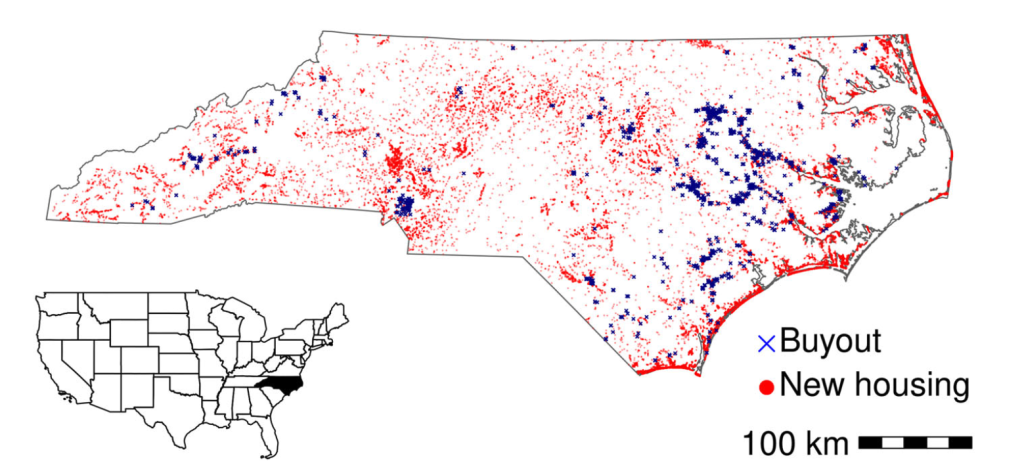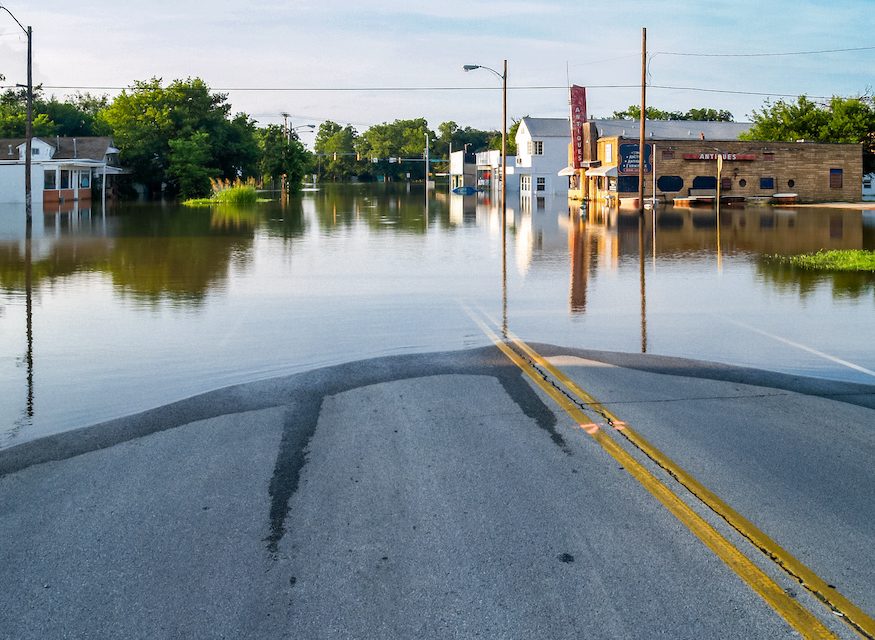
Miyuki Hino is an assistant professor in the Department of City and Regional Planning and an adjunct assistant professor in the Environment, Ecology and Energy Program at UNC-Chapel Hill.
Her research examines the links between climate hazards, governance and public policy to drive effective and equitable adaptation to climate change.
In the past few years, Hino has worked with ITS Research Computing and used the compute power of the Longleaf cluster to help policy makers, including the North Carolina General Assembly, understand floodplain development issues.
Using Longleaf
Much of Hino’s research comes out of the work she does with local and state governments to understand the impacts of flooding and evaluate potential flood risk management solutions.
Her research is empirical and data-driven and requires working with data from many different sources — and she relies on the Longleaf cluster for much of her data-intensive computational work.
On Longleaf, she works with a range of geospatial datasets covering information on flood events, real estate and socioeconomic characteristics. These datasets can be anywhere from a few gigabytes to a hundred gigabytes in size.
Flood resiliency report
In 2021, Hino worked with researchers across a broad array of disciplines to conduct research related to flood resiliency in eastern North Carolina.

For her role in the project, Hino leveraged Longleaf to help create and analyze data from a statewide database of buyouts, amalgamated from numerous local, state and federal datasets.
This project was funded by the North Carolina Policy Collaboratory, and the final report was sent to the North Carolina General Assembly in June 2021.
Hino said she found this project particularly rewarding because it “connected the needs of state government with UNC researchers.” The work for this report also led to a paper published in the September 2021 issue of Climatic Change.
Floodplain development study
Another study Hino conducted as part of the North Carolina Policy Collaboratory project was published in the February 2023 issue of the Journal of the American Planning Association.
For this study, Hino and a team of researchers analyzed new construction across five million parcels in North Carolina to develop standardized measures of floodplain development and evaluate the relationships between flood risk management effort and development outcomes.
Using Longleaf, Hino was able to compute on high-resolution data and process more data than previously possible. Specifically, she used Longleaf to clean and harmonize datasets describing building and parcel characteristics across the state. Then, she overlaid approximately five million parcels of land over statewide floodplain maps.
Combined with additional data on local government policies, this analysis aided in her understanding how floodplain development patterns vary across communities in North Carolina and the influence of policies, plans and regulations.

Future work

Hino’s current research is scaling up her floodplain development analysis from North Carolina to nationwide. Longleaf has already been critical for storing, processing and analyzing this data.
Hino is also currently using Longleaf to analyze large datasets on residential migration and environmental extremes. The aim of this project is to understand how migration has affected population exposure to environmental risks over time.
The migration data covers more than 10 million individuals moving through time, dating back to the mid-1900s. Hino is using Longleaf to integrate those migration records with daily temperature and air pollution data that span the United States.
A crucial resource
Hino said that “having access to a large-scale resource like Longleaf, both in terms of storage and computing power, is crucial to the research that I do and my publications.” Access to Longleaf enables her “to work with data at scale that would not be feasible on a desktop machine.”
Hino has used compute clusters at other institutions and has been impressed by the relatively short wait times on Longleaf. She hopes this continues to be the case going forward on Longleaf and that ample storage options remain available as she starts working with more and larger datasets.
She also appreciates the easy access to assistance from ITS Research Computing staff. In particular, she worked closely with Sandeep Sarangi, research associate in Research Computing, to troubleshoot issues and answer questions related to using Longleaf. “I use the R programming language for a lot of my work,” she said, “and Sandeep’s understanding of R and how to use it on a Linux cluster environment has been very beneficial.”
